How Does Yogiyo Data Scraping Help Analyze 90% of Restaurant Ratings and Pricing Trends?

Introduction
In the fast-paced food delivery market of South Korea, having accurate insights on restaurant trends, pricing, and customer sentiment is crucial for business growth. With the surge in demand for digital food delivery platforms, companies and restaurateurs are increasingly relying on structured data to make informed decisions. Food Data Scraping has emerged as an essential method to extract detailed information from online platforms efficiently, helping brands track menus, pricing trends, and consumer reviews across thousands of restaurants.
Yogiyo Data Scraping allows restaurants and market analysts to consolidate critical datasets such as menu items, prices, and ratings to identify consumer preferences in real time. For instance, by monitoring top-performing Korean food chains, businesses can determine popular dishes and assess market gaps. Tables comparing pricing trends across multiple restaurants help identify outliers and understand competitive positioning. Moreover, structured review data provides actionable feedback to improve service quality, menu offerings, and customer satisfaction rates.
Through advanced scraping techniques, Yogiyo Restaurant Data Extraction enables businesses to minimize manual research while delivering precise datasets to enhance decision-making. By integrating these insights into analytics dashboards, stakeholders can make informed operational, promotional, and pricing choices, ultimately boosting revenue and strengthening market presence.
Improving Menu and Pricing Decisions with Advanced Analytics
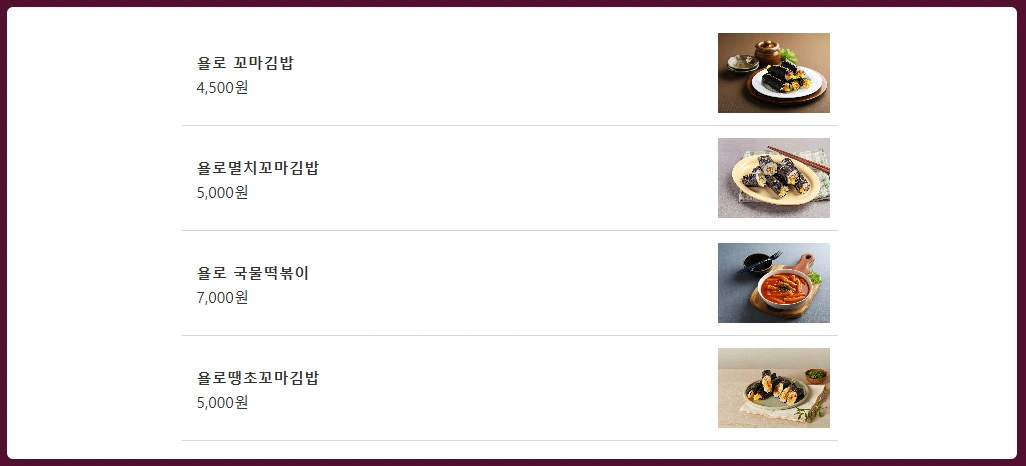
In today’s competitive food delivery market, restaurants need to understand not only what customers want but also how pricing influences their choices. By leveraging Yogiyo Data Scraping, businesses can access extensive datasets covering menu items, prices, and customer ratings to make informed pricing decisions. Analyzing these datasets allows for identifying high-performing dishes, optimal price points, and promotional opportunities that increase both revenue and customer satisfaction.
For example, restaurant operators can track fluctuations of similar menu items across competitors to maintain competitive and profitable pricing. Comprehensive datasets also reveal emerging culinary trends, such as changing preferences between traditional and fusion Korean dishes.
| Menu Item | Average Price (KRW) | Rating | Competitor Comparison |
|---|---|---|---|
| Kimchi Stew | 8,500 | 4.5 | +200 KRW higher than average |
| Bibimbap | 9,000 | 4.6 | Aligned with market price |
| Bulgogi | 10,500 | 4.7 | +500 KRW premium price |
| Tteokbokki | 6,500 | 4.2 | -200 KRW lower than competitors |
By studying such tables, businesses can adjust menu prices or introduce new items strategically to maximize appeal. Restaurants can also detect seasonal changes in ordering patterns and modify offerings proactively.
Yogiyo Menu Price Data provides the foundation for accurate cost-benefit analysis. When combined with historical ratings and trends, restaurants can make strategic menu adjustments that optimize profitability without alienating customers.
Enhancing Customer Feedback Analysis Through Structured Review Insights
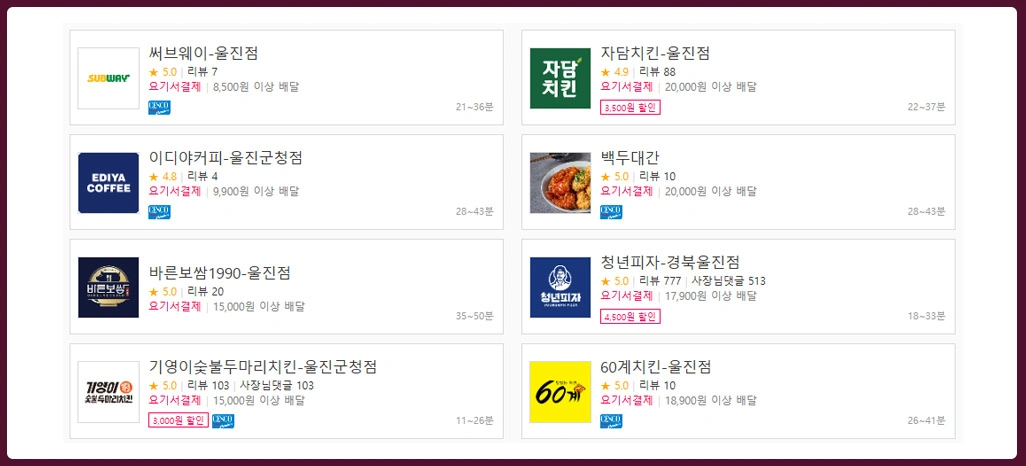
Customer reviews are among the most valuable sources of insight for any restaurant. However, manually reviewing thousands of opinions is impractical. With Yogiyo Reviews Scraping, businesses can automatically collect and analyze hundreds of customer reviews to extract actionable information. Sentiment analysis allows companies to understand customer satisfaction, detect recurring complaints, and identify strengths that resonate with their audience.
Price Monitoring data can be combined with review insights to examine how pricing affects customer satisfaction. For instance, if customers rate certain premium dishes lower due to high prices, restaurants can adjust pricing or portion sizes to improve satisfaction.
| Restaurant | Average Rating | Positive Mentions | Negative Mentions | Price Sensitivity Index |
|---|---|---|---|---|
| Seoul BBQ | 4.6 | 120 | 15 | 0.78 |
| Kimchi House | 4.4 | 90 | 18 | 0.65 |
| Noodle Spot | 4.2 | 75 | 25 | 0.60 |
| Tofu Delight | 4.5 | 100 | 10 | 0.72 |
By aggregating ratings and correlating them with pricing and menu popularity, restaurants can optimize menus to maximize positive experiences. For example, dishes with high ratings and moderate prices can be promoted as signature items, while low-performing items can be revised or removed. Moreover, sentiment analysis can reveal nuances such as service speed, taste consistency, and portion satisfaction.
Restaurants can track metrics like delivery times and food presentation in tandem with ratings, uncovering areas for operational improvement. These insights also extend to competitive benchmarking. By comparing reviews across multiple Korean food delivery platforms, companies can identify market gaps and innovate offerings.
Tracking Menu Updates and Popular Dishes Efficiently
Restaurants constantly refresh their menus, launch seasonal specials, and adjust to changing customer preferences. Food Delivery App Menu Datasets enable businesses to monitor these updates efficiently and respond quickly. Identifying which dishes are gaining or losing popularity is essential for menu optimization and creating focused marketing campaigns.
By monitoring menu trends, restaurants can identify patterns such as high demand for spicy dishes, vegetarian options, or fusion meals. This intelligence helps adjust inventory, reduce waste, and ensure that high-demand items are consistently available.
| Menu Item | Last Updated | Popularity Score | Competitor Availability |
|---|---|---|---|
| Spicy Chicken | 2025-09-01 | 4.7 | 6/10 competitors |
| Bibimbap Deluxe | 2025-08-15 | 4.5 | 8/10 competitors |
| Vegan Tteokbokki | 2025-09-05 | 4.6 | 4/10 competitors |
| Seafood Pancake | 2025-08-25 | 4.3 | 7/10 competitors |
Restaurants can identify pricing trends relative to competitors, uncovering dishes that may benefit from promotional offers or bundling strategies. Monitoring new menu launches through Restaurant Data Analytics Korea also provides valuable insights into market experiments and consumer response.
Using Yogiyo Menu Price Data, establishments can compare internal offerings with competitor data to determine which pricing strategies drive revenue and repeat orders. Analytics of top dishes and their reviews allow for informed marketing campaigns, targeting both existing and new customer segments effectively.
Optimizing Delivery Services Through Operational Insights
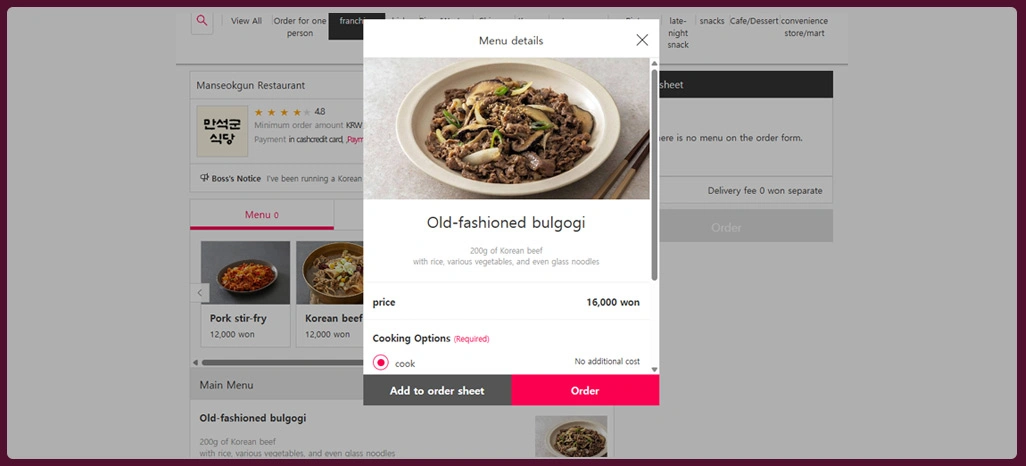
Efficient food delivery operations are essential for enhancing customer satisfaction and maximizing profitability. By tracking which dishes are consistently punctual or delayed, restaurants can optimize staffing, streamline kitchen workflows, and refine delivery logistics. Implementing Real-Time Restaurant Menu Tracking Korea further empowers businesses to monitor menus dynamically, ensuring timely updates and better operational efficiency.
| Restaurant | Avg. Delivery Time (min) | Late Delivery Incidents | Repeat Customer Rate |
|---|---|---|---|
| Seoul BBQ | 32 | 5 | 78% |
| Kimchi House | 28 | 8 | 72% |
| Noodle Spot | 35 | 12 | 65% |
| Tofu Delight | 30 | 4 | 80% |
Analyzing this data in correlation with customer reviews highlights operational bottlenecks that impact satisfaction. For example, dishes requiring complex preparation may need dedicated kitchen staff to reduce delivery delays.
Additionally, insights into Korean Food Delivery Data Scraping help companies understand delivery zones, peak ordering times, and customer preferences by area. This allows for smarter route planning, better resource allocation, and improved delivery consistency.
Leveraging Market Insights for Strategic Decision-Making
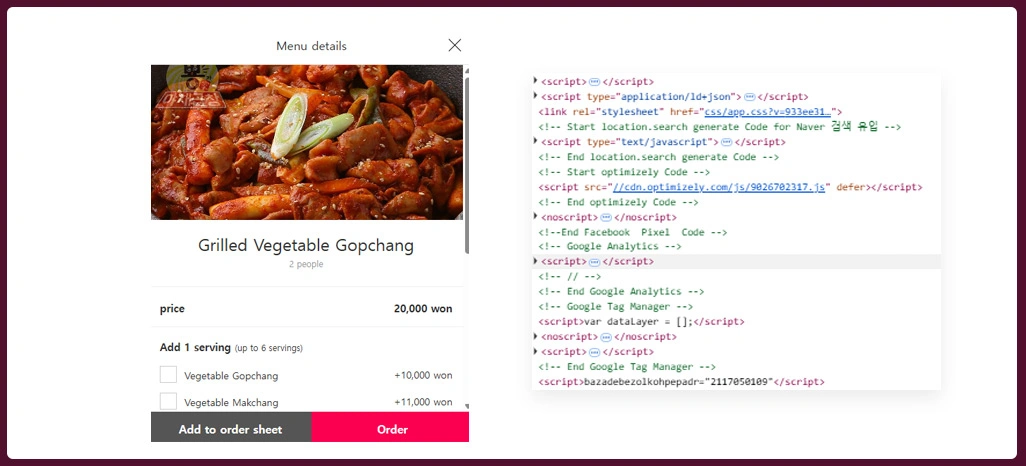
The restaurant industry excels when businesses understand consumer behavior, competitive trends, and pricing strategies. Food Delivery Data Intelligence provides actionable insights for informed decision-making. By analyzing customer reviews, menu updates, and pricing trends, restaurants can forecast demand, optimize inventory, and create targeted marketing campaigns.
| Metric | Current Value | Trend | Business Impact |
|---|---|---|---|
| Avg. Customer Rating | 4.5 | +0.1 | Increased brand credibility |
| Popular Dish Index | 4.6 | +0.2 | Better inventory management |
| Price Variance | 8% | Stable | Competitive pricing maintained |
| Delivery Time Compliance | 92% | +3% | Higher customer satisfaction |
These insights support decisions such as which dishes to promote, where to introduce new menu items, and how to allocate marketing resources effectively. Competitive benchmarking also allows restaurants to identify gaps in service or menu offerings.
Yogiyo API Data further enables automated integration of datasets into internal analytics systems, ensuring real-time updates and accurate reporting. Combined with Food Delivery Insights South Korea, restaurants gain a comprehensive view of market dynamics, enabling evidence-based planning.
Expanding Competitive Edge with Comprehensive Data Solutions
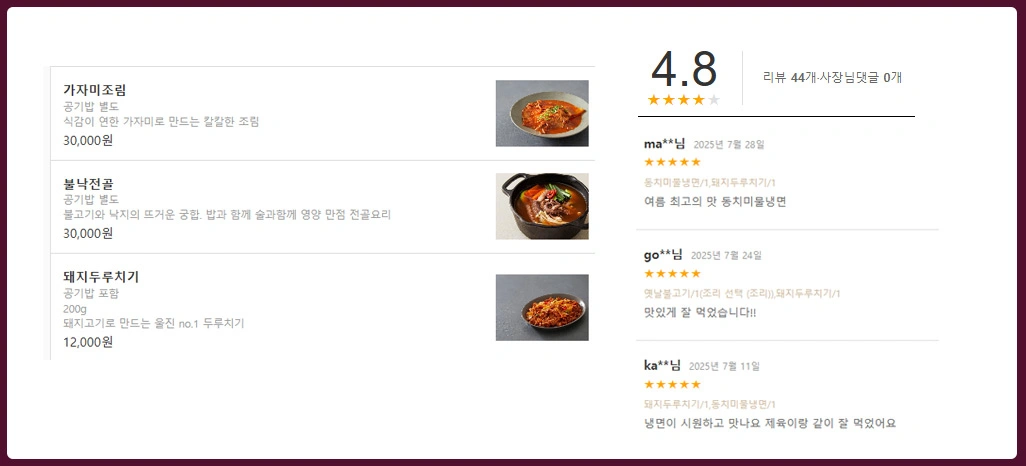
In a competitive food delivery landscape, having complete access to industry data is invaluable. Yogiyo Data Scraping allows restaurants to gather a wide range of datasets for competitor analysis, menu optimization, and market trend evaluation. With comprehensive information, businesses can identify opportunities for differentiation, promotional activities, and customer retention strategies.
| Dataset | Usage | Insights |
|---|---|---|
| Menu Prices | Pricing Strategy | Identify over- or underpriced items |
| Customer Reviews | Quality Feedback | Detect service gaps |
| Popular Dishes | Marketing Focus | Highlight top-selling items |
| Delivery Times | Operational Planning | Improve service efficiency |
Restaurants leveraging Web Scraping Services gain a competitive edge by accessing structured, real-time data that enables informed, agile decision-making. Insights derived from these datasets ensure that both operational and marketing strategies are aligned with market demand and customer expectations.
Moreover, in-depth analytics help identify niche segments, seasonal patterns, and emerging culinary preferences. Through Online Menu Price Monitoring Korea, restaurants can fine-tune menus, adjust pricing strategies, and design targeted promotional campaigns that truly engage customers, driving higher satisfaction and sustained growth.
How Retail Scrape Can Help You?
Restaurants and food delivery services face challenges in keeping up with rapidly changing market trends and consumer preferences. With Yogiyo Data Scraping, we provide a streamlined solution to extract accurate and actionable datasets covering menus, pricing, and customer feedback.
Our approach includes:
- Accessing comprehensive datasets for menu trends.
- Monitoring competitor pricing and promotional strategies.
- Extracting and analyzing customer sentiment and reviews.
- Tracking delivery efficiency and order patterns.
- Identifying top-performing dishes for marketing campaigns.
- Aggregating operational insights to optimize workflows.
By utilizing Yogiyo Menu Price Data, businesses gain the advantage of structured insights that save time, reduce manual research, and support strategic planning. From real-time monitoring to historical trend analysis, we ensure that your restaurant decisions are data-driven, targeted, and actionable.
Conclusion
Implementing Yogiyo Data Scraping empowers restaurants to make informed choices by analyzing ratings, menus, and pricing trends. Leveraging these insights allows businesses to enhance operational efficiency, optimize menus, and strengthen customer satisfaction across South Korea’s competitive food delivery market.
Additionally, incorporating Restaurant Data Analytics Korea ensures businesses remain aware of evolving trends, competitive actions, and consumer preferences. Contact Retail Scrape today to transform your restaurant data into actionable intelligence and achieve measurable business growth.
